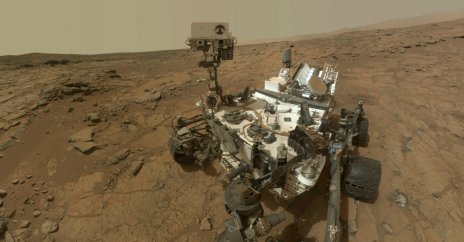via Is this ET? Mystery of strange radio bursts from space – space – 31 March 2015 – New Scientist.
Author: Sic
One day back in November 2013, Whiteson says, he and Mulhearn were visiting a local watering hole in Geneva. “We were having beers and thinking [about] what could we do that’s smaller scale, that we can handle ourselves. And while we were chatting,” he says, “we were, of course, fiddling with our smart phones, and that’s when we realized, ‘Hold on a second, these smart phones can actually be used as particle detectors!’ ”
That’s because smart phones use something called a CMOSchip inside their cameras. That’s the same kind of chip that’s used to detect particles generated by the Large Hadron Collider.
via Want To Do A Little Astrophysics? This App Detects Cosmic Rays : NPR.
http://www.sciencedump.com/content/water-wheel-pump-uses-water-move-water
This video provides in depth analysis in getting human to Mars in a realistic thought out manner. Q&A is half way thought the video.
On 28 December 2014, Valentino Gantz and Ethan Bier checked on the fruit flies that had just hatched in their lab at the University of California (UC), San Diego. By the classic rules of Mendelian genetics, only one out of four of the newborn flies should have shown the effects of the mutation their mothers carried, an X-linked recessive trait that causes a loss of pigmentation similar to albinism. Instead, nothing but pale yellow flies kept emerging. “We were stunned,” says Bier, who is Gantz’s Ph.D. adviser. “It was like the sun rose in the west rather than the east.” They hammered out a paper and submitted it to Science 3 days later.
via ‘Chain reaction’ spreads gene through insects | Science/AAAS | News.
Researchers at The Ohio State University have discovered how to control heat with a magnetic field.
In the March 23 issue of the journal Nature Materials, they describe how a magnetic field roughly the size of a medical MRI reduced the amount of heat flowing through a semiconductor by 12 percent.
The study is the first ever to prove that acoustic phonons—the elemental particles that transmit both heat and sound—have magnetic properties.
“This adds a new dimension to our understanding of acoustic waves,” said Joseph Heremans, Ohio Eminent Scholar in Nanotechnology and professor of mechanical engineering at Ohio State. “We’ve shown that we can steer heat magnetically. With a strong enough magnetic field, we should be able to steer sound waves, too.”
via Landmark study proves that magnets can control heat and sound.
The graphite rectangle drawn on the paper conducts electricity, but has quite a high resistance. As it bends, the resistance either increases or decreases, depending on which way it is distorted. By measuring that resistance, the precise angle of bend can be detected.
By gluing the paper to a finger, the researchers showed that it could monitor the movement of limbs. They also attached it to a ruler and showed that it could measure how bent the item was – a proxy for determining the pressure exerted on the ruler. And inside the fold of a book, it could measure the angle to which the book was opened.
via Pencil sketches turn paper into a sensor – tech – 18 March 2015 – New Scientist.
Much of the moon’s ice, which lurks beneath the surface, is found in an area 5.5° away from poles. The data suggest that the moon’s axis of rotation shifted in the past.
“It turns out these enhanced concentrations are exactly opposite each other—they’re antipodal,” says Matthew Siegler, a planetary scientist at the Planetary Science Institute who is based in Dallas, Texas. “The easiest explanation is: There used to be poles there.” Siegler and his colleagues have suggested a cause for the “polar wander”: a 3.5-billion-year-old hot spot beneath the moon’s surface. If the story holds up, it means the moon’s water is nearly as ancient as the orb itself.
via Lopsided ice on the moon points to past shift in poles | Science/AAAS | News.







